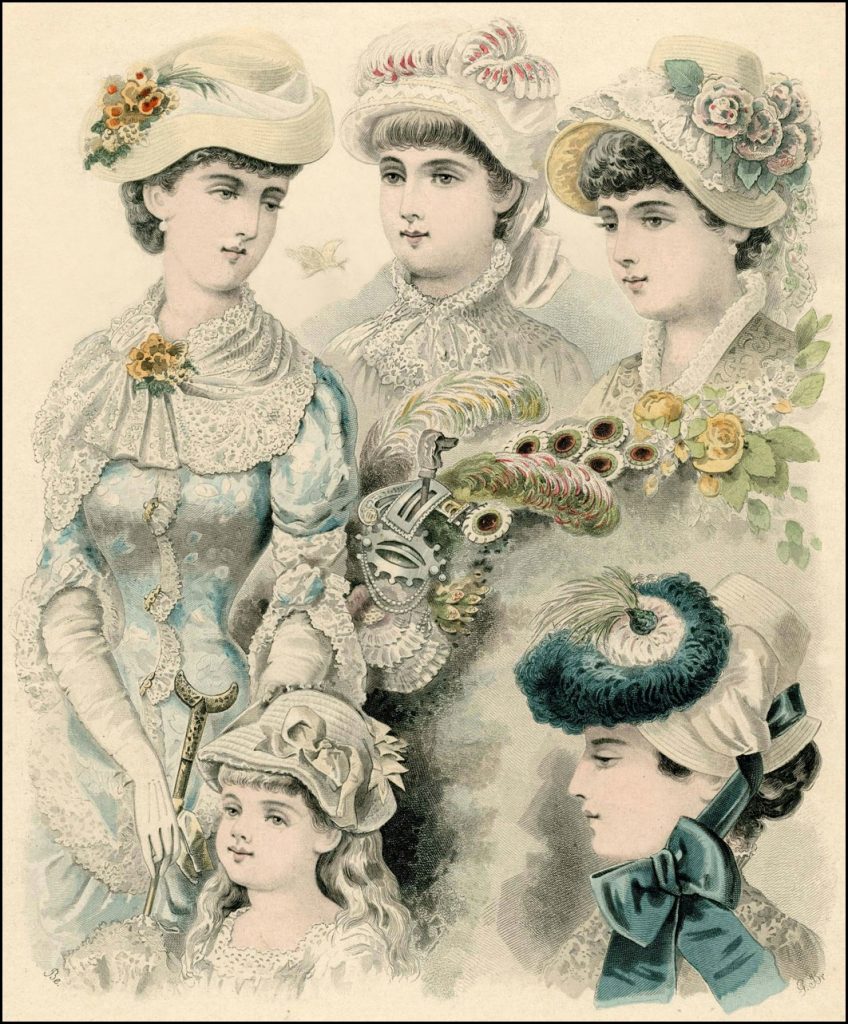No products in the cart.
Victorian Life
In My Easter Bonnet…….
The Easter parade as we know it today, like many customs, has its origin in the Victorian era. Victorians were devout, and after attending Easter church services, were known to stroll through the streets showing off their Spring finery. The Easter bonnet became very popular during this period. And – it would have been impossible to miss the processional of ladies donning their Easter bonnets for the Easter outing. The more affluent members of society bought new bonnets for the occasion – with many garishly outdoing one another with frills and fuss. For the poorer members of Victorian society, they would simply take old bonnets and decorate them with new trimmings to impress. During Victorian times, a beau might give a pair of gloves to his sweetheart. If she wore them during the parade, it was considered an announcement of her acceptance of his proposal. Many Easter bonnets were made of straw – particularly suitable material for the spring and summer months. These bonnets could be simply trimmed with a plain silk ribbon and a bunch of wildflowers. They could also be trimmed quite elaborately and expensively. In 1889, the Ladies Home Journal states that popular Easter bonnet trimmings included “….flowers and feathers, gold and silver braid, gold, black and white laces, beautiful tips, stately aigrettes, and everything in the way of rippling ribbons that can possibly be imagined.” The Ladies Home Journal went on to list the popular “millinery colors” of 1889, which were “especially noted on Easter bonnets.” These included white, yellow, black, gold, and “all the heliotrope shades.” Gold was a particularly stylish Easter color and, once more according to the Ladies Home Journal, the ultimate authority, “wherever a thread of it can be run, a piping of it be put, or even a very broad gold ribbon arranged in knots, it is seen.” Heavens! We all want to be seen! Time to get that bonnet ready!

